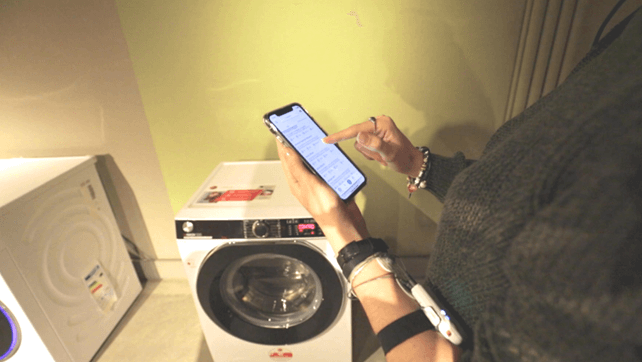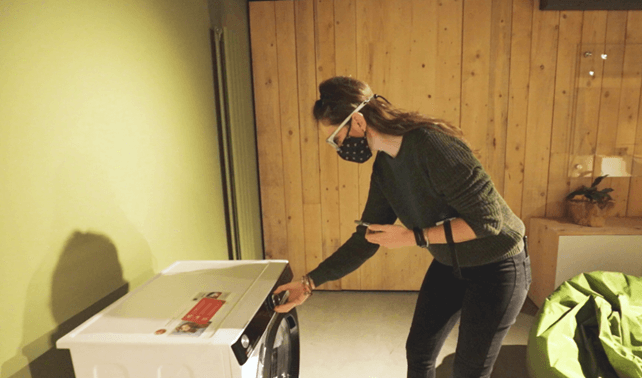In an everyday life increasingly influenced by technology, the concept of usability acquires more relevance than ever. Usability understood as the degree of satisfaction, well-being and gratification of people who, through technology precisely, constantly enter into a relationship with a product-service (and therefore with a company), living an experience that one hopes to be positively memorable.
Usability that, for us who by profession and by vocation have chosen to take care of the quality of experiences, becomes the subject of testing, whether it be testing an interface, an application or a website usability test.
Usability test therefore (or usability test, if you prefer) that in TSW see people involved first of all, who with their experience allow our researchers to understand where and how to intervene to design quality experiences, but also our customers: in our laboratories, companies that choose to entrust us with a project participate in the test as spectators of an experience that, today, unfortunately still often, diverges from the expectations of those who designed it without involving, from the early stages, who would then be the protagonist.
So then the usability test of an App or a website becomes an opportunity for re-connection between “user” and “brand”, to redesign together all those daily relationships that technology triggers.
So it was also for Haier Europe, a company specializing in the household appliances sector, which had already chosen us as a partner for what in 2017 would have been Candy’s new oven (we told you about it here) and which returned to us for usability of an App dedicated to the management of washer-dryers and air purifiers.
Haier Europe and the App to remotely manage washer-dryers and air purifiers
A smartphone is enough to manage many of the latest generation appliances that our homes have. In fact, there are several examples of mobile applications developed by brands to allow people to interact, even remotely, via their telephone, with washing machines or coffee machines.
In this context, Haier Europe has devised an application that allows users to interact with multiple appliances and in particular, in the case of our usability test, with the brand’s washer-dryer and air purifier. Specifically, the Haier App we tested offers users different possibilities for remote interaction, from setting the different washing cycles to storing the preferred settings for the washer-dryer, but also the CO2 control of the quality of the air and the maintenance of the filter in relation to the purifier.
The people, the end users to whom the brand is aimed, how do they live the experience with the new appliance, and with the equally new application, to manage it?

The usability test of the Haier Europe App to improve the user experience
It seems trivial (and perhaps it is) but observing people while interacting with an interface, a website or, as in this case, with an App for the remote management of household appliances, and asking them to outsource their own thoughts about the lived experience is an inexhaustible source of insight.
With this in mind, to conduct the usability test of the Haier App, we recreated in our laboratories a context similar to the domestic one in which we inserted the two Haier products and the same appliances from competing brands. We therefore invited the test participants, divided into groups determined by market segments, to perform specific tasks both in terms of interactions with the washer-dryer and with the air purifier, on the advice of one of our researchers.
For a complete mapping of the experience of the single person, we have combined in this usability test qualitative and quantitative research techniques: eye movements were recorded by eye-tracking (SMI ETG 2W – 120 Hz) and stress levels with a micro-sweating detector (SHIMMER GSR); in addition to quantitative data, during the usability test, the impressions and feedback of people relating to the experience they were having were collected in real time.
The result? A complete overview of the Haier Europe App user experience compared to similar experiences offered by competitors, full of invaluable ideas for re-designing an experience that, differentiating itself in quality from other market proposals, creates real value for the company (and for its customers).

Usability and quality of experiences: the value of involving people
The usability test in the qualitative-quantitative form that we have described, and which is inherent in the “With” approach, has had a new application for Haier Europe, but has been well suited to investigate the quality of interaction with websites, interfaces or information architectures.
Beyond the context, it is in fact a powerful tool because it is capable of bringing value to any project and at any stage of design, since it allows you to collect a complete and ordered set of data on what users see, do and say, but also they think and project into the future.
And it is only in this way, thanks to the involvement of people supported by tools and skills that make their perceptions measurable, that we can design better experiences.